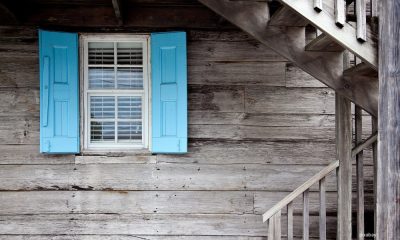Management
Healthy Homes For All!

What is the Healthy Homes Standards, the Healthy Homes Guarantee Act 2017 and why is it just for rental properties and not all homes? The goal should be healthy homes for all!
Poor Quality Homes
In New Zealand, we’ve been building terrible homes for decades. The Building Act is to blame for allowing shoddy building practices and materials. The bar has been set too low, and hence we’re had decades of leaky homes from the 1950s onwards, says a health researcher in an article on Stuff.co.nz
The new homes built on existing foundations, as part of the ‘Christchurch Rebuild’ are below par, but land movement threatens as many as 60,000 homes due to the poor state of foundations in Christchurch.
Rubble foundations were used in Christchurch homes many decades after the rest of New Zealand had stopped using it. So sub-par building, like the continuation of leaky homes and poor foundations, the future cost of the Crown is likely to be huge. For the rot to stop, the quality of our building has to rise substantially.
New Zealand needs more new homes, but more importantly, we need better quality homes.
Healthy Home Standards
So back to the Healthy Homes Standards (HHS) and Healthy Homes Guarantee Act 2017 (HHGA). Why are these initiatives just focused on rental properties when the evidence suggests most of our homes are of poor quality?
Property investors have purchased low-value homes once owned by private owner-occupiers and the Government, i.e. state homes. Many of these homes now fall into the ‘should be razed to the ground’ status, yet instead, they’re housing some of New Zealand’s most vulnerable people.
Up to 10% of New Zealand houses are not fit for habitation, and most are not warm enough, a health researcher says.
Shouldn’t all poor-quality homes in the country, including privately owned rental properties, social housing, and owner-occupied properties, adhere to the Healthy Homes Standards?
Owner Occupiers
There are more owner-occupied homes than rental properties in New Zealand. Sixty-three percent of people live in their homes, and due to our inferior buildings, they too live in unhealthy environments.
Owner-occupiers do not need to upgrade their properties with:
- insulation
- ground moisture barrier
- bathroom and kitchen extractor fans
- heating source that can heat the main room to 18 degrees celsius.
Rental Properties
There’s also the argument that with a lot of rental property stock, adding some insulation, and a couple of extractor fans is like using a bandaid to fix a broken bone.
Thirty-five percent of heat escapes through un-insulated walls, and another 10 percent out single glazed windows and doors, so the current insulation requirements don’t go far enough. I hear you; you’re saying that’s next on the list.
Retrofit double glazed windows and fill walls with blown-in insulation, and why not? Well, the cost is an excellent reason. The rental income only stretches so far.
Landlords Selling Up
Distressed landlords, mostly ‘ma and pa’ investors with one or two rental properties, are already finding it hard to profit from their investments.
Increases in running costs, including insurance and annual rates coupled with property tax changes, are hurting landlords so many are choosing to sell their rentals.
Summing Up
Everyone wants to live in a healthy home. Decades of poor building codes and compliance management have resulted in residential properties not being fit for purpose. Changes in weather conditions due to global warming continue to threaten the weather tightness of older homes. The Healthy Homes initiative will bring many rental properties up to a liveable standard and that’s good for tenants. Still, with owner-occupiers exempt from the Healthy Homes Act – many homes will remain in poor condition.






